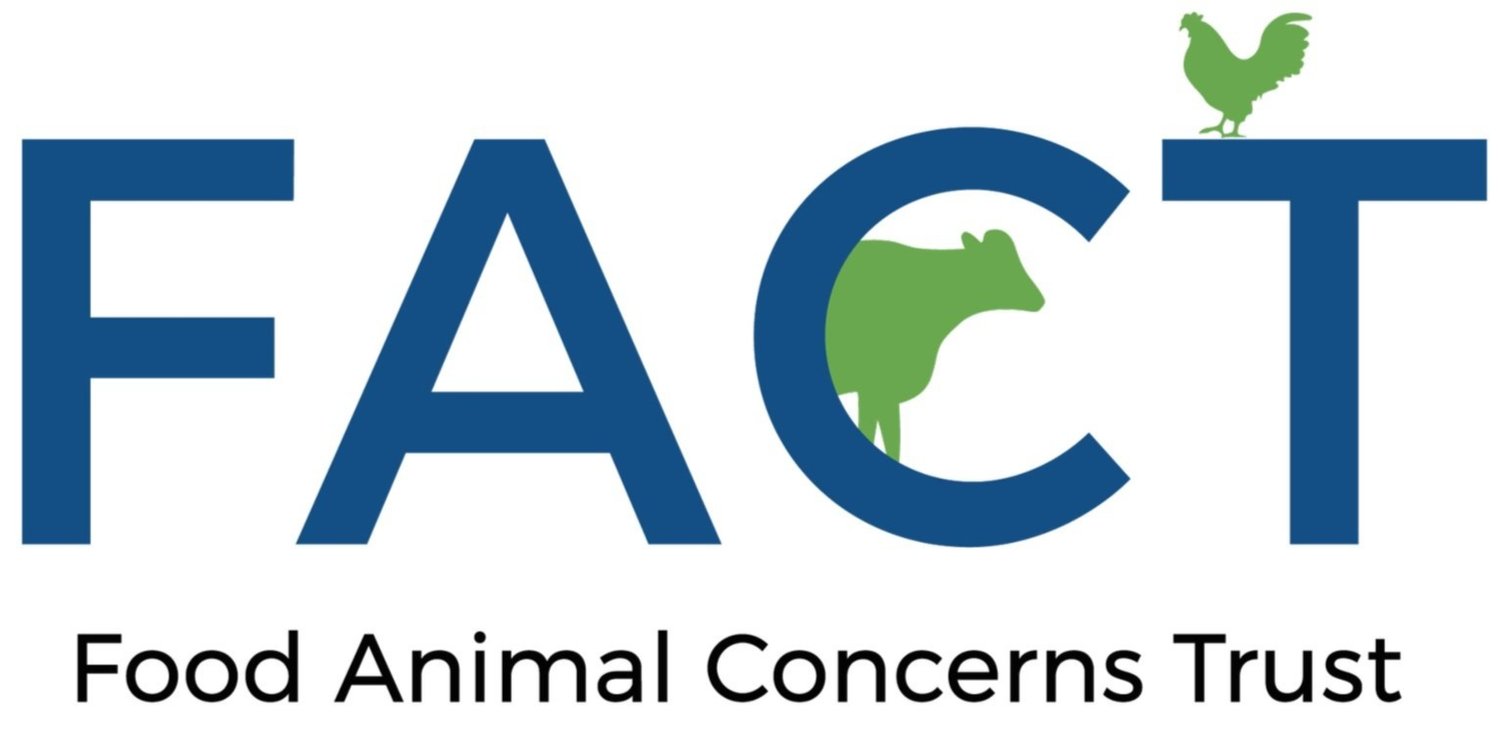Dairy can be Part of a Safe, Healthy, and Humane Diet but too Often it is Not
By Steve Roach, FACT’s Safe and Healthy Food Program Director
June is National Dairy Month. Milk, cheese, yogurt and ice cream can all be part of a safe, healthy, and humane diet. FACT works with farms around the country that treat their animals, land, and their communities well.
Our Fund-a-Farmer grants often go to pasture based dairy farms like Collins Farm and North Country Creamery in New York, or Boxcarr Farms in North Carolina whose dairy animals are out on pasture munching and ruminating while enjoying enviable scenery as they soak in the early morning sunshine.
Ashlee and Steven with their cows on pasture at North Country Creamery.
We are particularly excited when funds are used to help dairy farms transition away from free stall or tie barns to a pasture-based system like Mayday Farm in Maine or when we help dairy farmers convert previous row crop fields into a bountiful pasture like Placke Organic Acres in Wisconsin.
Still, this is not how most dairy cattle in the U.S. are raised. In 2017, over half of the dairy cows in the U.S. were on the 2000 operations that milk at least 1000 cows. That’s 2000 facilities out of a total of 55,000 farms with dairy cows. So, four percent of the dairies in the US have half the cows. The problem is only getting worse with the growth of mega-dairies that hold tens of thousands of animals each.
Once a dairy farm gets to such a large size, several problems arise. Cows are born to graze on pasture, but for a dairy with over 1000 cows, getting the animals out to pasture is difficult if not impossible. For a 10,000 head dairy it’s impossible. Instead of grazing, cows on these giant dairies stand on barren waste covered ground and never see grass. Some never go outside. This is a terrible environment for a dairy cow.
Cows in a dry lot dairy.
It’s not only a problem for the cows. These giant dairies which are often in dry regions – regions with no pasture and a lack of rain to keep the mud down - suck up scarce water both to provide water for the cows and to grow feed. Since the cows are not eating grass they are fed energy intensive row crops - corn and soy. Each dairy cow creates the equivalent waste of over 30 people and unlike human waste, animal waste is not normally treated before it is disposed of. Because of the expenses involved with moving the waste, it just gets overapplied to the land and ends up polluting rivers and ground water.
But water isn’t the only reservoir for pollution. Growing and transporting row crops for cattle feed pollutes the air, as do the dairy cows themselves. Giant dairies are big emitters of ammonia and nitrous oxide, a potent greenhouse gas. Recently there has been a push for government policies to promote capturing methane from dairies. It superficially sounds good but has a lot of negatives. It works best for large farms and creates a new source of income – which can promote the further growth of these already huge farms.
It does not have to be this way. Pasture based dairies are healthy for cattle and avoid or reduce many of the environmental problems of the giant dairies. Because of their clear benefits policies should support small grass-based dairies. This means:
Ending subsidies for manure handling for these giant farms such as incentives for factory farm methane capture
Regulating the air and water pollution from the mega farms
Restricting their overuse of water and other scarce natural resources
Reducing subsidies for the production of the field crops ( e.g. corn and soy) that these giant dairies rely on
Supporting small diversified pasture based livestock farms.


